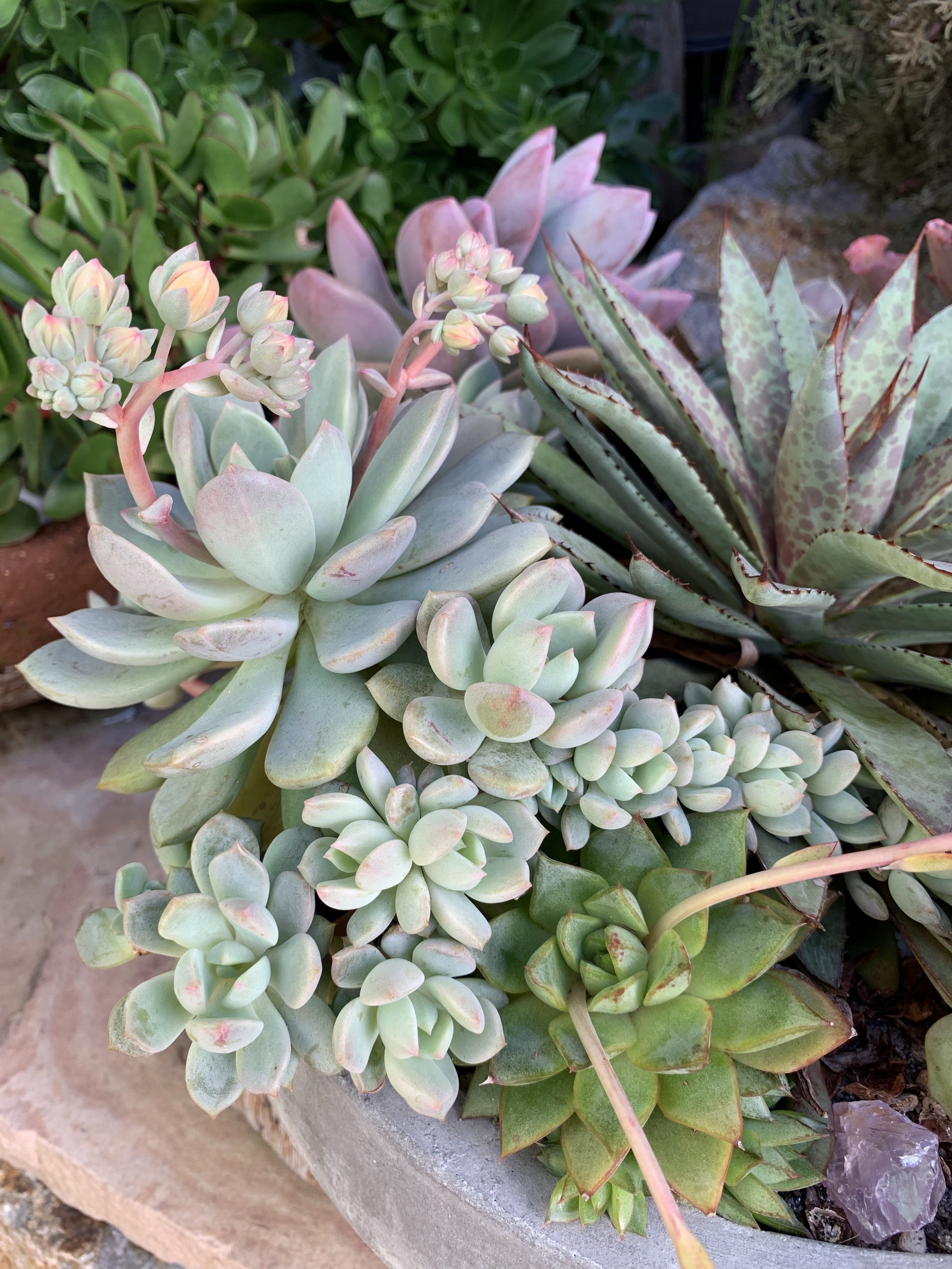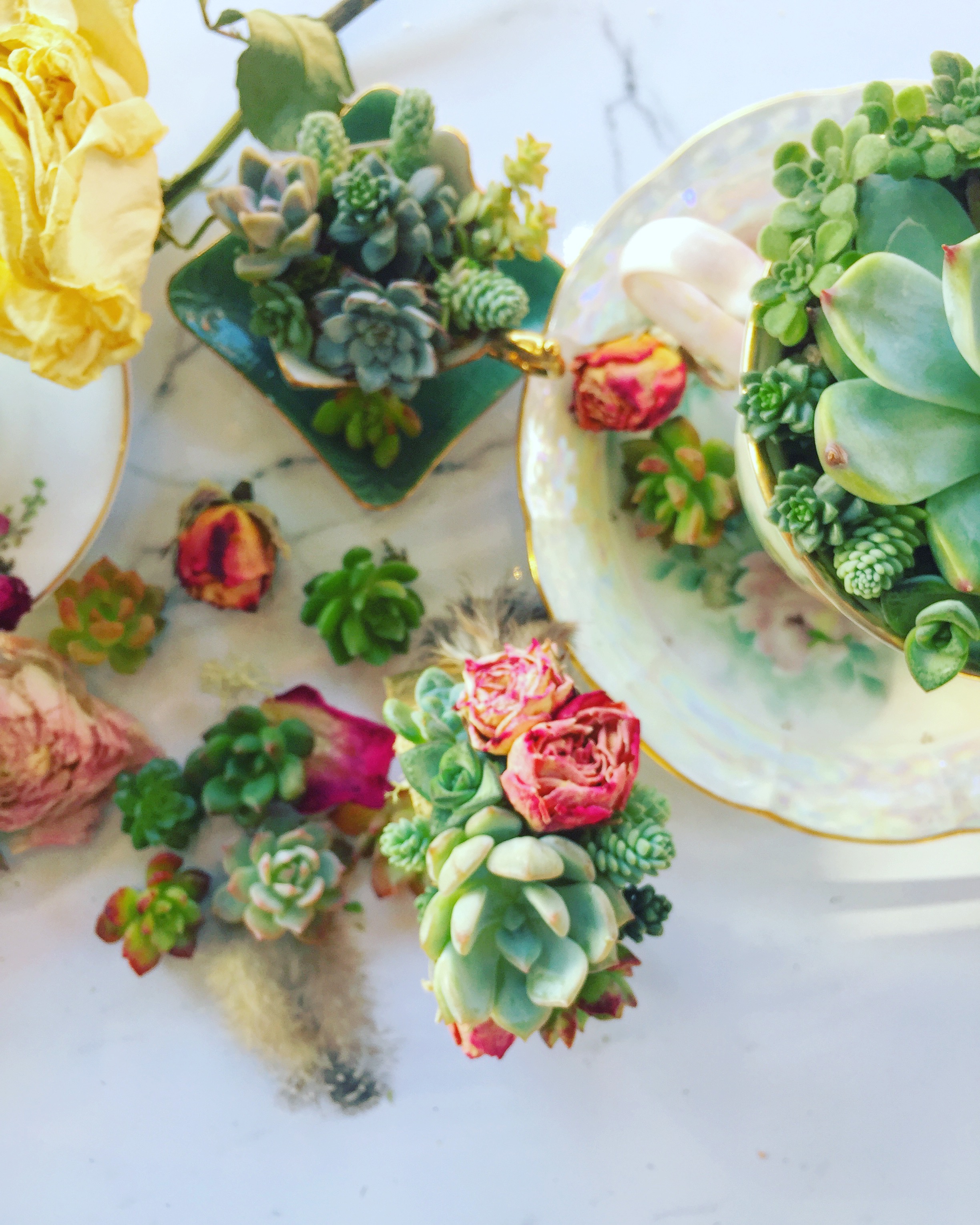Plant of the Month Archive: Echeveria Prolifica
all about Echeveria Prolifica
Hello friends!
Rachael again introducing you to the plant of the month for April – the Prolific Echeveria! These are a great succulent for Spring since, as their name implies, they are prolific reproducers, creating beautiful clusters of minty & silvery green rosettes. The numerous pups and clones created by the mother plant also make the Echeveria prolifica one of my favorite go-to succulents to clip for living art, like succulent headbands and bracelets. (Both of these are crafts you can find in my new book of succulent crafts - Infinite Succulent: Miniature Living Art to Keep or Share.
Echeveria prolifica are small clustering succulents, with each rosette only growing to be about 2-4 inches across – yet due to the amount of pups and offshoots they create, they can easily grow in to fill in a pot 6” in diameter or greater! In the Spring and early summer months they also put out their beautiful yellow blooms on long leafy stems (the leafs when fallen off the stem will also root into new baby plants!). These adorable succulents, like so many, are native to Mexico.
how to clip the echeveria prolifica for crafting & propagation
Using clean and sharp scissors or shears, clip away the smaller rosettes from the larger mother plant.
1. For small rosettes on long stems – simply clip the smaller rosettes off the branchy stem.
a. If you plan on replanting the rosette into soil, leave about ½ inch of stem below the rosette. Plant and DO NOT WATER for at least one week, to give new roots chance to grow and to reduce chances of clipping developing root rot.
b. If you plan on using the small rosette for succulent crafts in moss, clip the stem so it is just below the head of the rosette (no stem required for planting purpose). You can then glue the rosette to moss. DO NOT WATER at all for at least one week to give new roots chance to begin growing and reducing the risk of root rot.
2. For smaller rosettes surrounding the main Mother plant – find the main stem for the rosette, attaching it to the mother plant and then clip the stem, separating the smaller rosette from the main plant. Follow same instructions above for how to either plant or craft with your clippings.
caring for your echeveria prolifica:
Light:
Like with most echeveria the prolifica requires about 6 hours of bright yet indirect sunlight. When clipped from their roots they slow down their growth making these great options for succulent crafts. Be sure to acclimate these plants to full sun, as they can get sunburnt in bright direct sunlight if not already exposed. In very low light areas either outside or inside, these plants may etoliate or stretch out seeking more sunlight, losing their round and compact shape,
Water:
As with most echeveria, be cautious when watering, so as to ensure you are not allowing standing water to sit within the rosette, since this might lead to fungal infections or rot. If possible, water these succulents from underneath, or by aiming the water at the root zone, as opposed to the leaves. Like most succulents these plants like to let their soil go dry in between waterings especially if placed in more shaded and cooler areas. Do not allow the roots to sit in soggy soil for too long, as they can lead to root rot.
Maintenance:
All echeveria are prone to pests like mealybugs and scales. Remove the older, dried out leaves around the base of the plant because the leaf litter may often become a haven for pests. If you start to notice soggy and dark leaves near the base, these are the first signs of overwatering and possible rot. Be sure to remove the discolored leaves and check for signs of further rot (blackened stems or leaves). You can halt rot from overtaking your entire plant by clipping off the rosette, removing the rotting stem and then replanting the rosette in dry soil (or pumice). Always wait 1-2 weeks before watering any newly planted clippings, to provide opportunity for new roots to grow.
Thanks for reading!
Rachael
SOURCES:
World of Succulents – Echeveria prolifica
Gardenia - Echeveria prolifica
THANKS FOR READING!
RACHAEL & zoey



